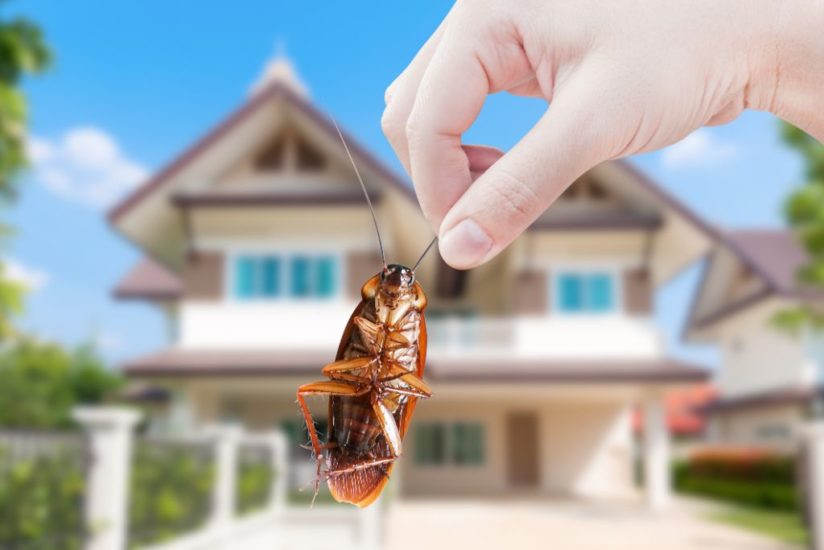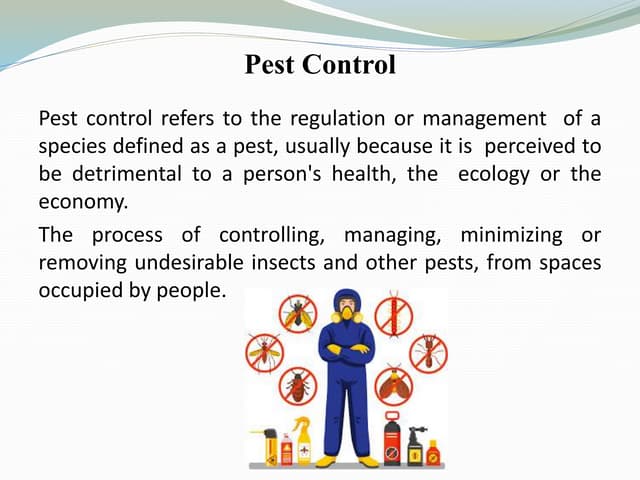The Basic Principles Of Pestwise
Pestwise - Questions
Table of ContentsOur Pestwise DiariesSome Known Details About Pestwise The Buzz on PestwiseFascination About PestwisePestwise Can Be Fun For EveryoneEverything about PestwiseFascination About PestwiseThe Basic Principles Of Pestwise Some Of PestwiseThe 10-Minute Rule for Pestwise
A microorganism must not be thought about a pest up until it is confirmed to be one. Categories of pests include: continuous parasites that arc nearly always present and call for regular control. sporadic. migratory, or intermittent pests that call for control occasionally or intermittently. possible insects that do not need control under typical problems.Precise recognition is the initial step in an efficient insect monitoring program. Never ever attempt a pest control program up until you ensure what the bug is. Pest Control. The even more you find out about the pest and the elements that influence its development and spread, the easier, more cost-efficient, and more effective your bug control will be
How Pestwise can Save You Time, Stress, and Money.
As a certified applicator, you need to know with the pests you are likely to run into in the sort of work in your certification group. To be able to identify and manage pests, you require to recognize: the physical functions of the pests likely to be encountered. attributes of the damage they cause, their growth and biology, whether they are continuous, erratic.
Create as little harm as possible to every little thing except the bug. Also though a pest exists, it might refrain quite damage - Pest Control Services. It might set you back even more to control the bug than would be lost as a result of the pest's damages. Whenever you try to manage a parasite you will certainly intend to attain one of these three goals.
5 Simple Techniques For Pestwise

The intent is to lower the number of pests to a degree where the harm they are causing is acceptable. Once a pest's existence is detected and the decision is made that control is necessary, suppression and avoidance commonly are joint objectives.
Elimination is sometimes tried when an international pest has been accidentally introduced however is not yet developed in a location. Such eradication techniques commonly are sustained by the Federal government.
An Unbiased View of Pestwise
Enclosed environments generally are smaller sized, less complex, and a lot more easily regulated than outside areas. In several confined areas, such as houses; institutions; workplace buildings; and health treatment, food handling, and food prep work facilities, particular parasites can not or will not be tolerated.
Thresholds might be based on esthetic, wellness, or economic factors to consider. These degrees, which are called "activity limits," have been established for lots of bugs. A threshold usually is set at the level where the economic losses triggered by pest damage, if the pest populace remained to expand, would be higher than the price of controlling the bugs.
As an example, the visibility of any rodents in food processing centers forces action. In homes, individuals typically do something about it to manage some parasites, such as rodents or roaches, also if only one or a couple of have actually been seen. In many pest control circumstances, the location to be safeguarded must be checked (checked or hunted) frequently.
The 7-Minute Rule for Pestwise

There is zero tolerance for the presence of microorganisms in running areas and various other clean and sterile locations of health and wellness treatment facilities. In these circumstances, routine pest control procedures are required to prevent pests from going into an area and to eradicate any kind of insects that may be existing. Bug control involves more than merely recognizing a parasite and utilizing a control method.
Every one of these might be influenced by the insect control measures you pick. Unless you take into consideration the possible results on the entire system within which the bug exists. your parasite control initiative could create damage or cause proceeded or brand-new parasite problems. Rely on your very own great judgment and, when chemicals are part of the technique, on the chemical labeling.
The Definitive Guide to Pestwise
The actions of every type of microorganism or element sharing the website usually impact the actions and well-being of numerous others. When the balance is interrupted, certain organisms may be ruined or lowered in number, and others in some cases the insects - might control. Integrated parasite monitoring is the integrating of proper bug control techniques right into a single strategy (method) to decrease bugs and their damage to an appropriate degree.
Counting only on chemicals for bug control can trigger pests to create resistance to chemicals, can create outbreaks of other parasites, and can damage surface areas or non-target microorganisms. With some sorts of pests, use chemicals as the only method will certainly accomplish very bad control. To resolve insect problems. you should: determine the pest or parasites and determine whether control is warranted for each and every.
recognize what control strategies are readily available. evaluate the advantages and threats of each technique or mix of strategies. pick a method that will be most reliable and will certainly cause the least injury to people and the atmosphere. use each strategy in the strategy correctly. observe local, State, and Federal guidelines that apply to the scenario. Weather condition problems, especially temperature, day length, and moisture, impact parasites' task and their rate of reproduction. Pests might be eliminated or subdued by rainfall, freezing temperatures, drought, or other unfavorable weather condition.
How Pestwise can Save You Time, Stress, and Money.
Birds, reptiles, amphibians, fish, and creatures prey on some bugs and assist regulate their numbers. Numerous predacious and parasitical pest and insect-like types feed upon other microorganisms, several of which are bugs. Pathogens often subdue bug populations. Attributes such as mountains and huge bodies of water restrict the spread of several insects.
Pest populations can grow just as long as their rood and water supply lasts. When the food resource - plant or pet - is tired, the pests die or become inactive. The life cycle of many parasites depends on the schedule of water. The availability of shelter can impact some parasite populations.
Everything about Pestwise
However, natural controls commonly do not regulate pests quickly or totally adequate to stop undesirable injury or damage. Other control actions must be used. Those available include: host resistance, organic control, cultural control, mechanical control, sanitation, and chemical control. Some plants, pets, and frameworks stand up to parasites far better than others.
Use resistant types, when available, helps maintain pest populaces below unsafe levels by making conditions much less desirable for the parasites. Host resistance functions in three main means: Chemicals in the host drive away the insect or stop the pest from finishing its life cycle. The host is more energetic or tolerant than various other selections and therefore much less most likely to be seriously harmed by parasite strikes.
The smart Trick of Pestwise That Nobody is Talking About
Biological control entails the use of natural adversaries bloodsuckers, killers, and microorganisms. You can supplement this all-natural control by launching even more of an insect's enemies into visit site the target area or by introducing new adversaries that were not in the area before.
But, under appropriate problems, sufficient control can be achieved to remove the danger to the plant or animal to be safeguarded. Biological control also includes techniques whereby the pest is biologically altered, as in the production and release or big numbers of sterile males and using pheromones or adolescent hormones.
Pheromones also can be a control device. In some cases a produced copy of the pheromone that a female insect uses to draw in men can be utilized to puzzle males and stop breeding, resulting in lower numbers of insects.
The Ultimate Guide To Pestwise
(https://www.wattpad.com/user/pestwise01)Cultural practices often are made use of to minimize the numbers or bugs that are striking grown plants. These techniques modify the atmosphere, the problem of the host plant, or the actions of the insect to stop or subdue a problem. They interfere with the normal relationship in between the parasite and the host plant and make the pest much less most likely to survive, expand, or recreate.
Devices, machines, and various other approaches made use of to regulate pests or modify their setting arc called mechanical or physical controls. Catches, screens, barriers, fences, webs, radiation, and electrical energy occasionally can he made use of to stop the spread or parasites into a location. Lights, heat, and refrigeration can change the atmosphere enough to reduce or get rid of some parasite populations.